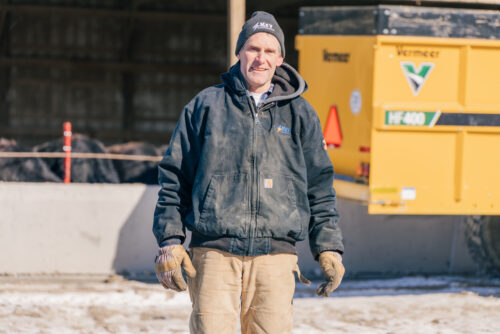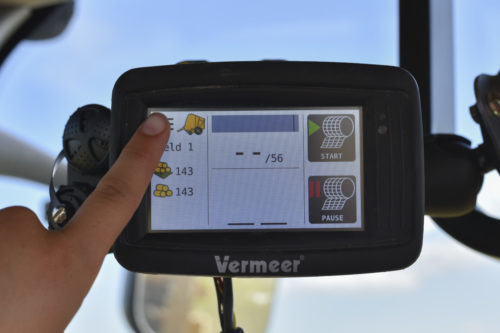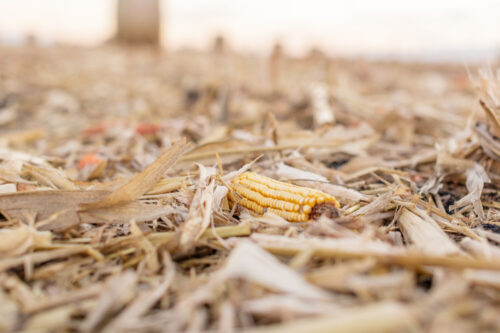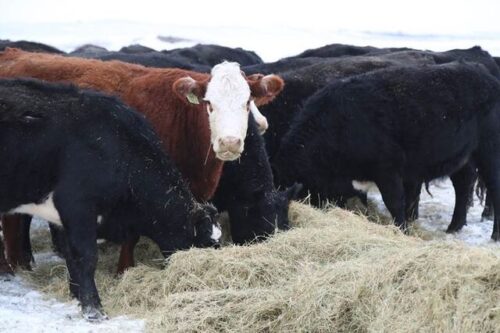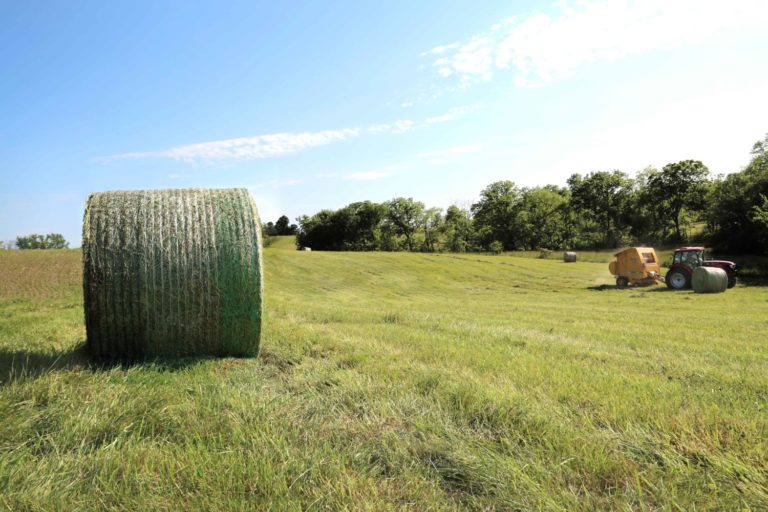
Netwrap vs. twine: how to choose for your operation
November 2022
There’s no denying weather and timing are two of the biggest factors in the production and quality of hay. Unfortunately, you can’t change the weather and you can’t always control your timing. However, there are factors you can control — like whether you use twine or netwrap on your bales.
Your choice will impact your productivity in the field and the nutritional quality of your hay. It’s not just about bale presentation. It’s about potential storage losses, herd health, feed value, weight gains, animal production, and fuel, material and labor costs.
The factors below and your production goals will help you decide if netwrap or twine is best for you.
Bale durability
Twine: The durability of your twine-wrapped bales likely depends on the type of material you’re using. Twine is often available in polypropylene, plastic and sisal varieties. With the right settings, any of these materials can help you create a durable bale. However, sisal twine can start to degrade over time — increasing the possibility of losing hay during transportation or storage. Additionally, twine of any kind will fare better on a pallet or in a sheltered site, as twine-wrapped bales do not have as strong water-shedding abilities.
Netwrap: Netwrapped bales often times maintain their shape and hay quality better than twine. An American Society of Agricultural and Biological Engineers (ASABE) study found netwrap helped reduce storage and handling losses by as much as 65% compared to twine. How? Tightly-wrapped bales maintain their shape with a secure, full-width netted casing. It’s typically tighter, more uniform and more stable in all types of storage conditions. Additionally, netwrapped bales have better water shed qualities, helping prevent water damage during storage.
A high-density polyethylene (HDPE) netwrap, like Vermeer® Net, increases the protective characteristics even more and minimizes stretching.
Cost per bale
Twine: Twine offers hay producers an economical way to make hay bales. A roll of twine can cost roughly 90% less than netwrap. However, you’ll need more twine per bale compared to netwrap. That’s because balers need about 20 revolutions of twine to create a sturdy bale. Netwrap, on the other hand, needs only two to four rotations to finish a bale. As a result, the actual cost of twine-wrapped bales is about half as much as netwrapped bales.
Netwrap: Netwrap is the more expensive choice on paper. However, it can help you save in other ways — like the rotation example above. By using fewer turns to create a bale, netwrap helps hay producers create more bales in the same amount of time. A study conducted by the ASABE indicated a round baler using netwrap could create 32% more bales per hour than the same baler using twine. As mentioned previously, netwrap can also help minimize storage and handling loss — providing additional value to producers and their customers.
High-moisture baleage
Twine: Twine can certainly be used to bale high-moisture forage. Both netwrap and twine are often used with plastic wrap during the baleage process. However, the type of twine you use is important. According to Kevin Schinners, Ph.D., University of Wisconsin, rodenticide-treated sisal twine tends to degrade the plastic film over time. Holes in your plastic film can create opportunities for loss through mold or yeast creation.
Netwrap: Using netwrap can help minimize the possibility of creating holes in the plastic film later and to help create a smoother bale surface before plastic wrap.
Creating a better bale
There’s no right or wrong answer when it comes to choosing twine or netwrap for your operation. The key is understanding the type of hay you’re putting up, your risks and real costs in labor and time and how much you’re willing to commit to minimize potential hay losses.
Find your local Vermeer dealer to further discuss if netwrap or twine is best for your operation.


